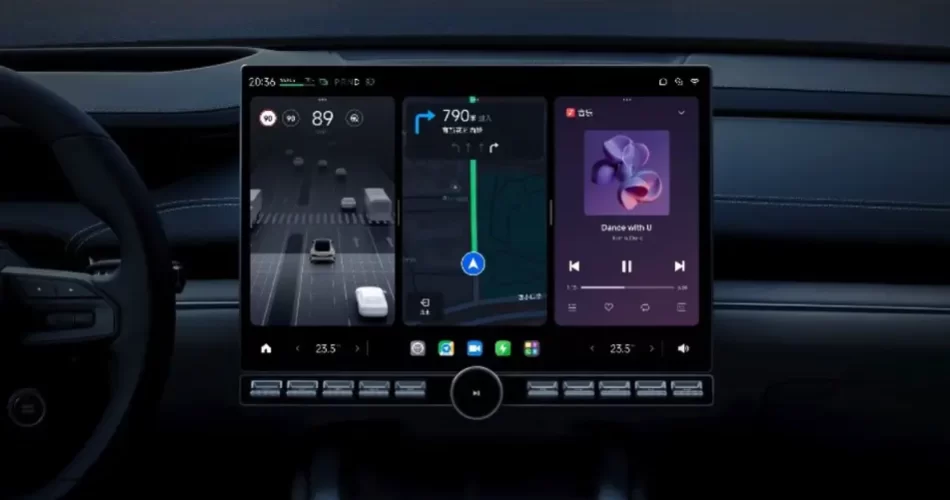Xiaomi has achieved its purpose: a system that is as independent as it is connected at the same time
September 28 was a historic day for Xiaomi. It unveiled to the world the SU7, its first electric car, a departure from its signature economical approach that has been its hallmark for years. The SU7 represents a direct challenge to brands such as Tesla and Porsche, successfully achieving its development in less than three years and with surprising technical specifications.
Beyond its autonomy, power and design, the Xiaomi SU7 stands out for being the first electric vehicle equipped with HyperOS, Xiaomi’s own software that is already starting to be deployed in some cell phones.
The integration with Xiaomi mobiles is much deeper than what we would find in an iPhone next to a car with Apple CarPlay, or any Android phone with Android Auto. We will delve into how Xiaomi’s electric car software will work, as the proposal is more than ambitious.
Up to five screens connected at the same time
The Xiaomi SU7 features a digital cockpit, a Heads Up display and a huge 16.1-inch center panel with 3K resolution. In addition, it has two rear hook-ups to connect both Xiaomi tablets and iPad. In total, five displays that can communicate simultaneously.
If you’re not familiar with HyperOS, it’s worth knowing that it’s the new operating system customization layer for Xiaomi’s new products. The company brings to the table that it is a proprietary system although, technically, it is based on Android and customized by Xiaomi.
HyperOS is updated via OTA from the car itself, so it is similar to what we have seen in Android Automotive.
In other words, we are a priori before a modification to the extreme of Android Automotive (not Android Auto), with new menus, redesigned interfaces, full integration with the car’s sensors and own functions. This means that the car has its own operating system and does not depend on the phone to have applications. As it is its own system, it is possible to access the car’s parameters, as well as the information collected by its sensors.
If we want full integration with the smartphone, we have several possibilities. If we use a phone with HyperOS, we can directly send its screen to the car (mirroring). As both systems are connected, it is possible to enlarge the small window that we have opened from the cell phone in the vehicle interface, a fusion that demonstrates the cohesion of a fully integrated system.
If we have an iPhone, we can connect to the car via Apple CarPlay or even use AirPlay to send content. Here the integration is not as deep as when using HyperOS alone, but it is a vehicle fully compatible with the Apple ecosystem.
So much so that the supports of the rear seats are compatible with iPad, so we can have the central screen connected to Apple CarPlay and, in turn, two iPad connected. It is also compatible with Xiaomi tablets. In the latter case, it will be possible to view data from the vehicle itself through these screens, provided they are updated to HyperOS.
In short, Xiaomi is looking for a connected experience between screens. Its electric car has HyperOS as its operating system, upgradable by OTA and independent in operation with respect to any other device. It can thus receive calls, send messages, use navigation applications and everything we are used to seeing in systems such as Android Automotive or Apple CarPlay.
In addition, we can add connections, such as our Android phone, a Xiaomi with HyperOS, iPhone, iPad, Xiaomi tablets, etc.. For maximum compatibility it is essential to use HyperOS.

